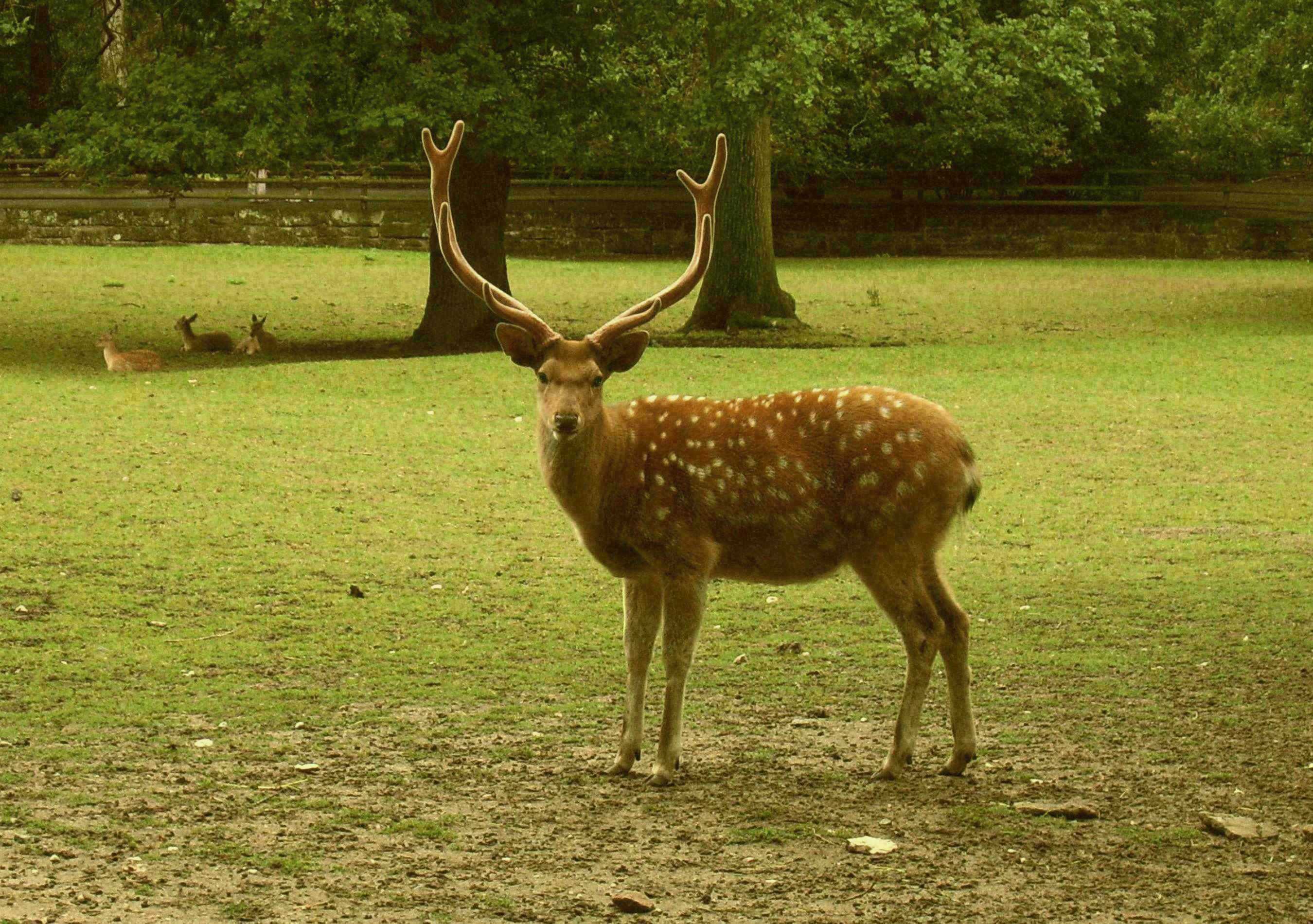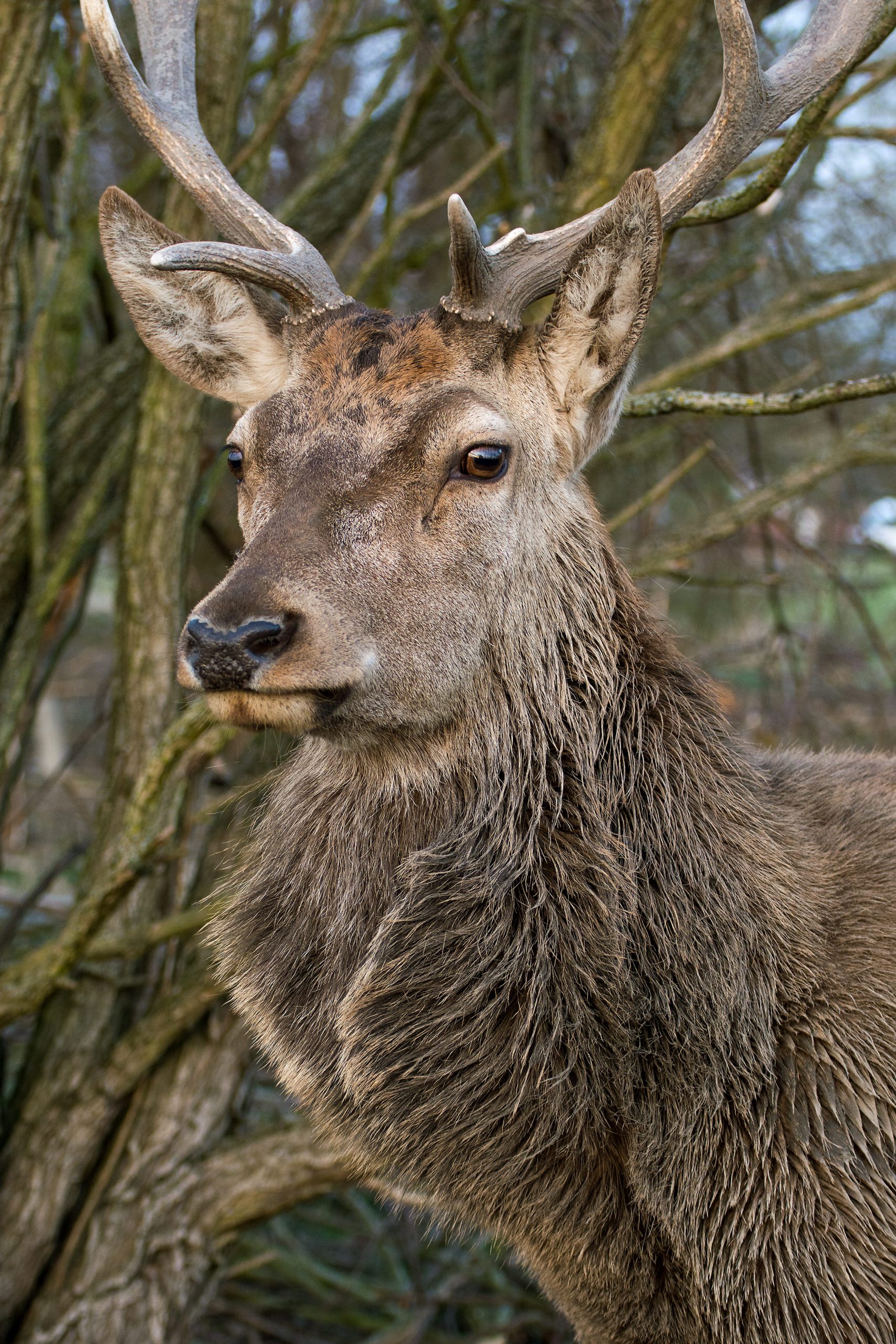|
North China Sika Deer
The North China sika deer or Mandarin sika deer (''Cervus nippon mandarinus'') is one of the many subspecies of sika deer. It is a large subspecies with some of the most prominent spots of all subspecies, which is permanent throughout the year. It previously inhabited lowland forests of North China Plain and Northeast China Plain. Because of intensive habitat alterations the subspecies was endangered centuries ago, surviving only in remote areas of northeastern China and the Qing Imperial Hunting Grounds. Though no surveys have been conducted on the subspecies' status, there have been no sightings for many decades and it is reasonable to presume that it is extinct in the wild A species that is extinct in the wild (EW) is one that has been categorized by the International Union for Conservation of Nature as known only by living members kept in captivity or as a naturalized population outside its historic range due .... Although it is fairly common in zoos and purebred North ... [...More Info...] [...Related Items...] OR: [Wikipedia] [Google] [Baidu] |
Sika Deer
The sika deer (''Cervus nippon''), also known as the Northern spotted deer or the Japanese deer, is a species of deer native to much of East Asia and introduced to other parts of the world. Previously found from northern Vietnam in the south to the Russian Far East in the north, it is now uncommon except in Japan, where the species is overabundant. Etymology Its name comes from , the Japanese word for "deer". In Japan, the species is known as the . In Chinese, it is known as . Taxonomy The sika deer is a member of the genus ''Cervus'', a group of deer also known as the "true deer". Formerly, sika were grouped together in this genus with nine other species. Now, only the sika and red deer remain, the latter being divided into three separate species: European red deer, central Asian red deer, and American elk (though this remains controversial). Recent DNA evidence indicates these deer are not as closely related as previously thought, resulting in the creation of new species ... [...More Info...] [...Related Items...] OR: [Wikipedia] [Google] [Baidu] |
North China Plain
The North China Plain or Huang-Huai-Hai Plain () is a large-scale downfaulted rift basin formed in the late Paleogene and Neogene and then modified by the deposits of the Yellow River. It is the largest alluvial plain of China. The plain is bordered to the north by the Yanshan Mountains, to the west by the Taihang Mountains, to the south by the Dabie Mountains, and to the east by the Yellow Sea and Bohai Sea. The Yellow River flows through the plain, before its waters empty into the Bohai Sea. The part of the North China Plain around the banks of the middle and lower Yellow River is commonly referred to as the Central Plain (). This portion of the North China Plain formed the cradle of Chinese civilization, and is the region from which the Han Chinese people emerged. Beijing, the capital of China, is located on the northeast edge of the plain, with Tianjin, an important industrial city and commercial port, near its northeast coast. Jinan (the capital of Shandong province) and ... [...More Info...] [...Related Items...] OR: [Wikipedia] [Google] [Baidu] |
Northeast China Plain
The Northeast China Plain (), commonly known as Song liao Plain or the Manchurian Plain or just the Northeast Plain, is located in Northeast China, historically also known as Manchuria. It lies between the Greater and Lesser Khingan and Changbai mountains, ending at the coast at Liaodong Bay in the Bohai Sea. Covering 350,000 km2, it is China's largest plain, with an elevation of lower than 200 meters, and less than 100 meters to the southwest. The Songhua, Nen, and Liao rivers run through it. The Manchurian Plain of Asia is the other name of the Amur valley.Encyclopedia Britannica''Northeast Plain'' Retrieved 12-5-2019. The Northeast Plain includes Songnen Plain in the north, Liaohe Plain in the south, and Sanjiang Plain in the northeast. The Songnen plain was formed by the Songhua and alluvial soils from the Nen. The Liaohe plain, located in the hilly areas near Changchun, was created by the separation of watersheds of the Songhua and Liaohe, which are collectively know ... [...More Info...] [...Related Items...] OR: [Wikipedia] [Google] [Baidu] |
Qing Dynasty
The Qing dynasty ( ), officially the Great Qing,, was a Manchu-led imperial dynasty of China and the last orthodox dynasty in Chinese history. It emerged from the Later Jin dynasty founded by the Jianzhou Jurchens, a Tungusic-speaking ethnic group who unified other Jurchen tribes to form a new "Manchu" ethnic identity. The dynasty was officially proclaimed in 1636 in Manchuria (modern-day Northeast China and Outer Manchuria). It seized control of Beijing in 1644, then later expanded its rule over the whole of China proper and Taiwan, and finally expanded into Inner Asia. The dynasty lasted until 1912 when it was overthrown in the Xinhai Revolution. In orthodox Chinese historiography, the Qing dynasty was preceded by the Ming dynasty and succeeded by the Republic of China. The multiethnic Qing dynasty lasted for almost three centuries and assembled the territorial base for modern China. It was the largest imperial dynasty in the history of China and in 1790 the f ... [...More Info...] [...Related Items...] OR: [Wikipedia] [Google] [Baidu] |
Extinct In The Wild
A species that is extinct in the wild (EW) is one that has been categorized by the International Union for Conservation of Nature as known only by living members kept in captivity or as a naturalized population outside its historic range due to massive habitat loss. Examples Examples of species and subspecies that are extinct in the wild include: *Alagoas curassow (last unconfirmed sighting reported in the late 1980s, listed extinct in the wild since 1994) *Beloribitsa * Cachorrito de charco palmal (last seen in 1994, listed extinct in the wild since 1996) * Christmas Island blue-tailed skink (listed extinct in the wild since 2014) *Dabry's sturgeon (listed extinct in the wild since 2022) * Escarpment cycad (listed extinct in the wild since 2006) *Franklinia (last seen in 1803, listed extinct in the wild since 1998) *Golden skiffia (listed extinct in the wild since 1996) *Guam kingfisher (listed extinct in the wild since 1986) *Hawaiian crow or ʻalalā (last seen in 2002, li ... [...More Info...] [...Related Items...] OR: [Wikipedia] [Google] [Baidu] |
Cervus
''Cervus'' is a genus of deer that primarily are native to Eurasia, although one species occurs in northern Africa and another in North America. In addition to the species presently placed in this genus, it has included a whole range of other species now commonly placed in other genera. Additionally, the species-level taxonomy is in a state of flux. Taxonomy Genus Until the 1970s, ''Cervus'' also included the members of the genera ''Axis'', '' Dama'', and ''Elaphurus'', and until the late 1980s, it included members of ''Rucervus'' and '' Rusa''. Species In the third edition of ''Mammal Species of the World'' from 2005, only the red deer (''C. elaphus'') and sika deer (''C. nippon'') were recognized as species in the genus ''Cervus''. Genetic and morphological evidence suggest more species should be recognized. For example, the species ''Cervus canadensis'' (elk/wapiti) is considered a separate species. Red deer species group Within the red deer species group, some sources ha ... [...More Info...] [...Related Items...] OR: [Wikipedia] [Google] [Baidu] |


